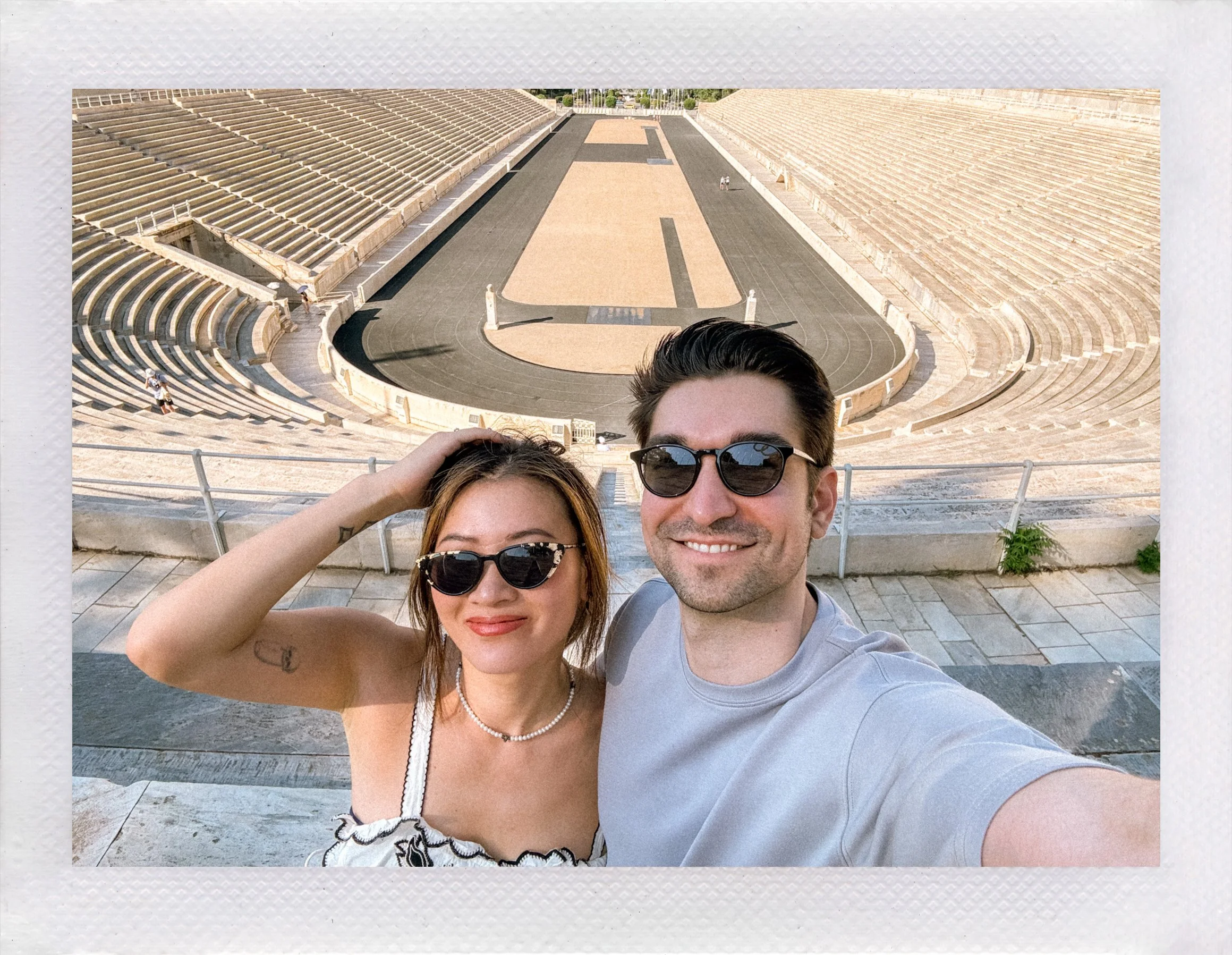【Παναθηναϊκό Στάδιο】Panathenaic Stadium in Athens, Greece
This post contains affiliate links, meaning EVERLASTYING will earn a commission if you purchase through our link at no extra cost.
Read my disclosure for more information. I appreciate your support 🤍
Imagine standing in the only stadium in the world made entirely of white marble — where the very first modern Olympic Games were held. That’s the Panathenaic Stadium, and yes, it’s just as epic in person as it sounds.
If you’re asking yourself, “Is the Panathenaic Stadium even worth visiting?” the short answer is: absolutely. But how you experience it — tickets, tours, or a full Athens pass — can make or break your visit.
quick facts
🎉 Built in the 4th century BC for the Great Panathenaia festival.
⚪️ Rebuilt in marble by Herodes Atticus in 144 AD.
🏆 Hosted the first modern Olympics in 1896.
📷 Still used for events today (Dior even held their 2022 Cruise show here ✨).
history of the Panathenaic Stadium
The Panathenaic Stadium isn’t just a pretty marble stadium — it’s one of Athens’ deepest ties to its ancient, Roman, and modern identity.
It began in the 4th century BC, when the Athenian statesman Lykourgos built a 260-meter-long stadium out of poros stone for the Great Panathenaia festival — a celebration dedicated to the city’s patron goddess, Athena. The land originally belonged to a man named Deinas, whom Lykourgos persuaded to donate it to the city. Historical records even noted a donation of 1,000 yoke of oxen to help complete construction.
By 329 BC, the stadium was ready to host athletic competitions. Early on, only the privileged had stone seating, but the venue grew into a major symbol of civic pride.
In 138 AD, the wealthy Athenian Herodes Atticus took things up a notch. He rebuilt the entire stadium in shimmering Pentelic marble, giving it a massive capacity of 50,000 — rivaling Rome’s Stadium of Domitian. A marble throne from the stadium’s front row (the prohedria) is still preserved today in the British Museum.
Like much of Athens, the stadium saw decline after the late 4th century. It was abandoned, forgotten, and eventually covered by fields of wheat. During the Crusader era, knights even used it for tournaments!
Fast forward to Greece’s independence in the 1800s: the stadium was rediscovered, sparking a revival of the Zappas Olympics in 1870 and 1875. Tens of thousands filled the seats again.
When Athens prepared to host the first modern Olympic Games in 1896, the stadium was refurbished thanks to a donation by wealthy Greek businessman George Averoff. On April 6, 1896 (previously March 25 according to the Julian calendar, which was then used in Greece), 60,000 people — including King George I and Queen Olga — witnessed the rebirth of the Olympics right here!
Since then, the stadium has remained central to Greek culture:
1906 2nd International Olympics
2004 Summer Olympics
2011 Special Olympics
Concerts and cultural shows
Even Dior’s Cruise 2022 fashion runway
👉 Walking through the stadium today is an incredible feeling, you’re not just stepping on marble — you’re standing on centuries of athletic and cultural history.
tickets & tours
Here’s the deal: you can’t book regular tickets online.
If you just want general admission, you’ll need to buy them at the entrance. But if you want to skip the hassle (and get more for your time & value), guided tours are the way to go.
🎟 GENERAL ADMISSION TICKETS
You can buy directly at the entrance. You can also request a short audio guide, which is included with your ticket (available in 11 languages).
🏛 GUIDED TOURS
If you’re short on time, half-day or full-day private tours are available that include the Panathenaic Stadium, as well as other Athens highlights such as the Acropolis.
This is perfect for travelers who want history explained without having to fumble for guidebooks or decide which attraction to visit.
⚡ SMART MOVE: If your time in Athens is short, a guided combo tour saves you from wasting time in line and gives you a richer story of both the stadium and the Acropolis.
where to stay
If you’re planning to visit the Panathenaic Stadium, staying central makes sightseeing effortless.
💎 LUXURY
Hotel Grande Bretagne
— 5-star, historic, and iconic.
🛎️ MID-RANGE
Electra Metropolis Athens
— modern design, rooftop pool, and close to everything.
💸 BUDGET
Moon & Stars Boutique Hotel
— stylish, affordable, near the metro.
know before you go!
| CATEGORY | INFO |
|---|---|
| TICKETS | Buy at entrance only (guided tours = only online option) |
| BEST TIME TO VISIT | Summer: early morning (8 AM). Other seasons: anytime |
| ESTIMATED DURATION | ~ 30 – 45 minutes |
| PRICE | $ |
| WHAT TO WEAR | Comfortable shoes + clothing |
| ACCESSIBILITY | Ground-level access. Stairs are steep |
| PET POLICY | Service animals only |
| 🚻 FACILITIES | Bathrooms available (€1 fee) |
| FOOD / DRINK | Only water is allowed |
| PERFECT FOR | Families. History lovers. Teachers. Runners. |
final thoughts
So, if you’re still wondering whether the Panathenaic Stadium is worth visiting?
I’d say, hell yes.
Even if you’re not an Olympic fan, this is one of those “you can’t leave Athens without visiting it” spots.
The marble glimmers in the sunlight, the history spans millennia, and you’re literally walking the track where modern Olympic history began.
When we visited in August, I thought I’d melt — but going in the morning made it somewhat bearable (it was still really hot under the sun, thank God for shade).
Seeing locals jog laps around the track while I stood on centuries-old marble? Absolutely surreal.
visit info
-
Panathenaic Stadium: Home
Panathenaic Stadium: Visit
Visit Greece: Panathenaic Stadium
Wikipedia: Panathenaic Stadium
Wikipedia: Zappas Olympics
check out my Greece travel vlog!
DISCOVER MORE
08032025 08:52
















The mystical mountain of jagged peaks, monasteries, and views that’ll make you forget city life for a while. Whether you’re planning your first visit or deciding if it’s worth the trip, this Montserrat day trip guide has everything you need — from how to get there to the best time to visit and the tickets you don’t want to miss.